
It took far too long to get here, but it may have been worth the wait. The 2024 Chevrolet Equinox EV, GM’s smallest and least expensive battery-electric vehicle, is finally rolling into dealerships across the country. Now we’ve driven it, and it’s good.
You can view the electric Equinox as the anti-Tesla. Where the Silicon Valley startup’s Model Y is aggressively tech-forward, with few controls outside its central touchscreen, the Chevy is soothingly predictable, with knobs for climate control, a stalk for the turn signals and wipers, and another for the gear selector. It even has a drive selector on the column, just like a sixties Chevy with a column-shift automatic—which opens up the console to make room for two large drinks and even a slot for pens (though, oddly, the Equinox EV doesn’t offer wireless charging in any trim).
Where the Tesla’s Model Y is aggressively tech-forward, with few controls outside its central touchscreen, the Chevy is soothingly predictable.
Not visibly electric
The relatively sleek crossover shape says “small SUV” without telegraphing the electric powertrain, and the interior bears a clear family resemblance to other Chevy models—including the large horizontal touchscreen and digital instrument cluster.
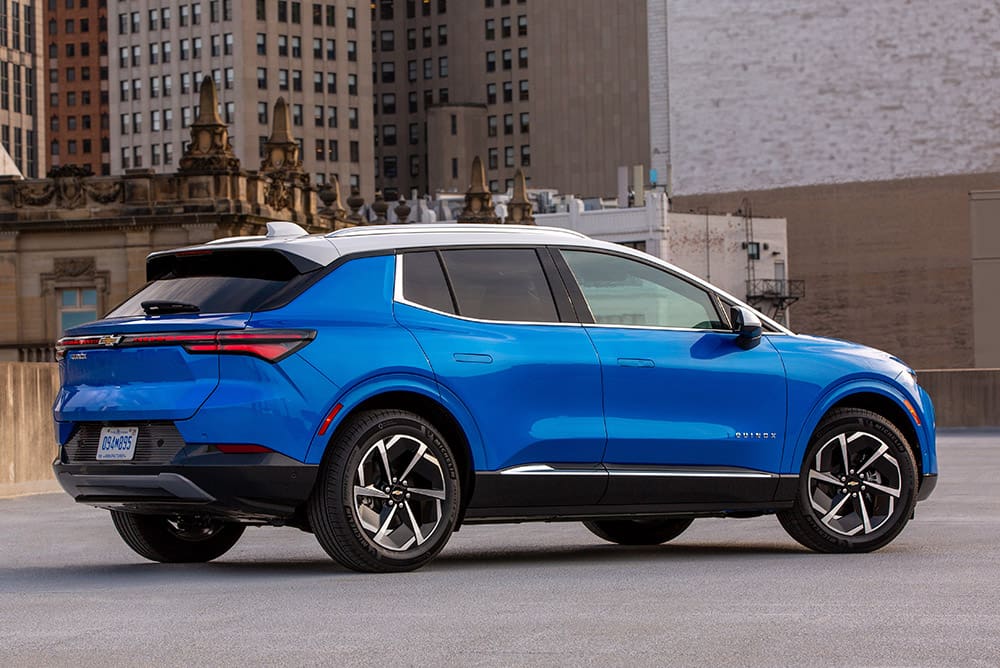
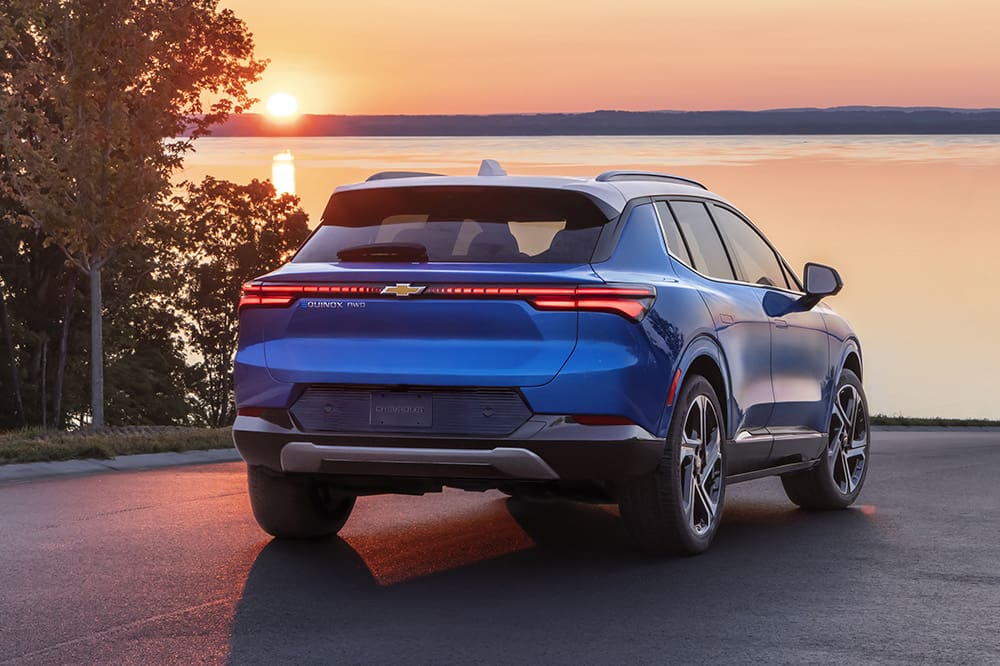
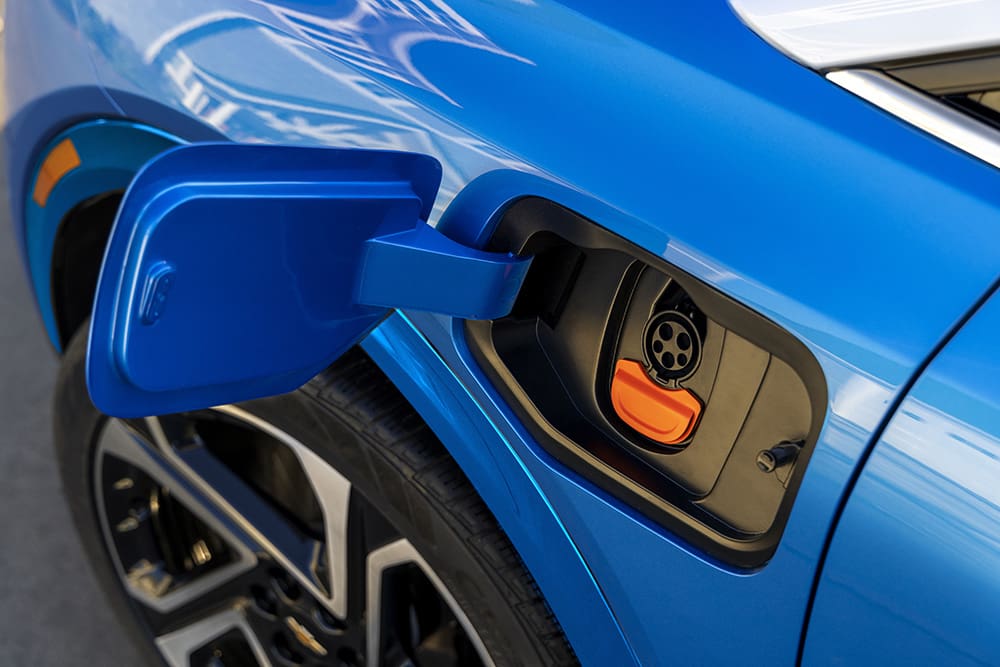
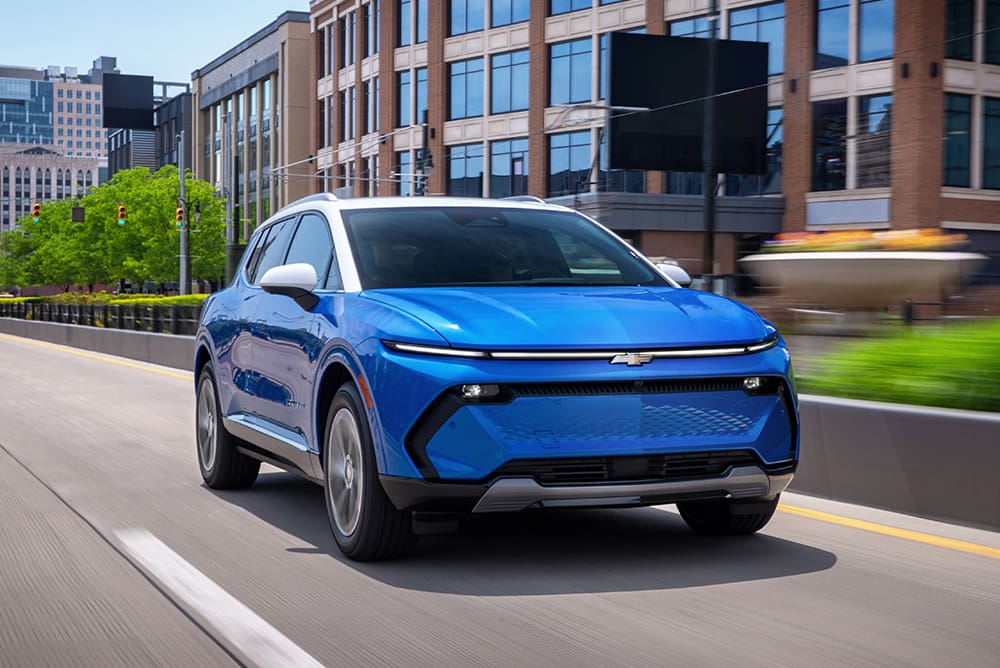
Photos Courtesy of Chevrolet
Bring one home for a test drive, and your neighbors might never know you’re driving an EV—except, of course, for its humming sound below 22 mph and its smooth, silent acceleration. Chevy caters to mainstream US car shoppers, and the Equinox EV almost seems designed to reassure them: “See, look, EVs aren’t weird or strange. They’re just like, y’know, regular cars.”
Crucially, with EVs still priced above the market average and interest rates high, the Equinox EV is GM’s most affordable plug-in model. The launch versions start at $43,295 for the 2LT trim (which wraps in the required $1,395 fee for delivery). The high-end 3RS trim starts at $46,795. All-wheel drive adds $3,400. The RS trim is an appearance package for $1,500. Every Equinox EV is eligible for the federal $7,500 purchase rebate, which brings the total cost below the crucial $40,000 level.
Even better, Chevy promises an entry-level trim starting at $34,995 “later this year.” If this proves to be real, that’s a cost under $30,000 after the point-of-sale rebate—assuming the entry-level model is widely available, and not just a single loss-leader vehicle to lure in shoppers. It also assumes the dealership plays ball and doesn’t keep some or all of the rebate for itself (it has happened).
Big battery, big miles
Built on the Ultium platform that will spawn close to a dozen different crossover utility vehicles and full-size trucks and SUVs, the Equinox EV competes straight across with the Tesla Model Y—including on EPA-rated range. At the time of writing, an Equinox EV with front-wheel drive (319 miles, $43,295) slightly undercuts the Tesla Model Y Long Range RWD on price (320 miles, $44,990) with equal range. Every version of each vehicle qualifies for the $7,500 federal point-of-sale purchase rebate. However, note that Tesla changes prices and specs so often that this information may already be out of date. Confirm the ranges and prices for yourself.
Every version of the Equinox EV offered in spring 2024 is powered by an 85 kWh battery that uses NMCA cells fabricated at one of the two joint-venture GM-LG Ultium cell plants in Ohio or Tennessee.
Chevy can provide more than 300 miles of EPA range because it uses a larger battery pack than most competitors. Beyond the Tesla Model Y, those include the Hyundai Ioniq 5, Kia EV6, Nissan Ariya and Volkswagen ID.4. Every version of the Equinox EV offered in spring 2024 is powered by an 85 kWh battery that uses NMCA cells fabricated at one of the two joint-venture GM-LG Ultium cell plants—in Lordstown, Ohio or Spring Hill, Tennessee. (A third cell plant in Lansing, Michigan is now under construction.)
That battery sends current to a 213 hp motor powering the front wheels. All-wheel-drive versions add a second motor at the rear, giving a total combined power rating of 288 hp—at the cost of a lower range rating. EPA ranges are 319 miles for FWD, but 285 miles for AWD.
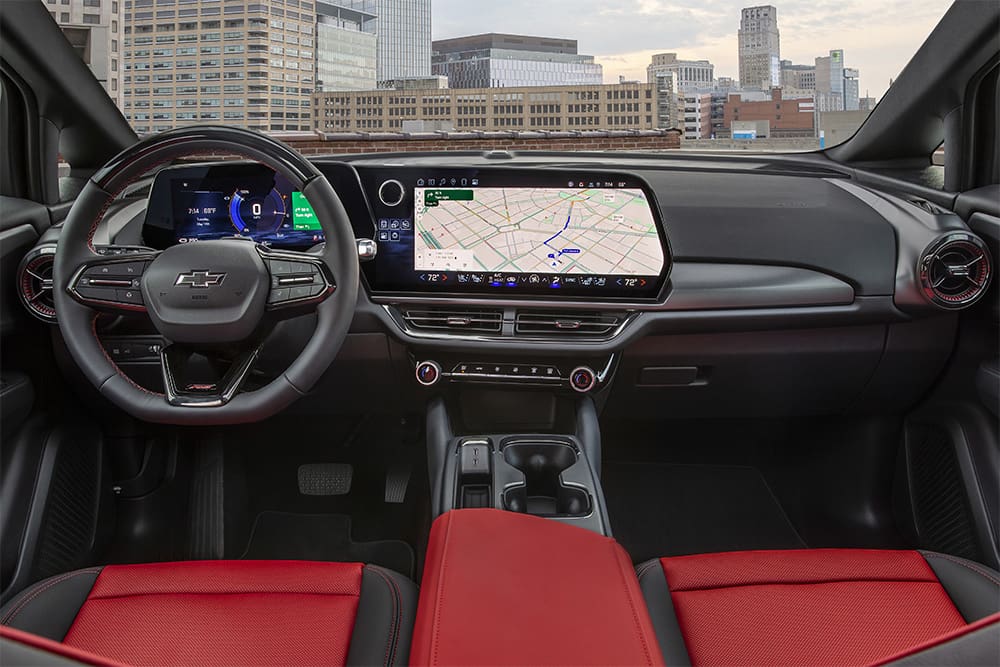
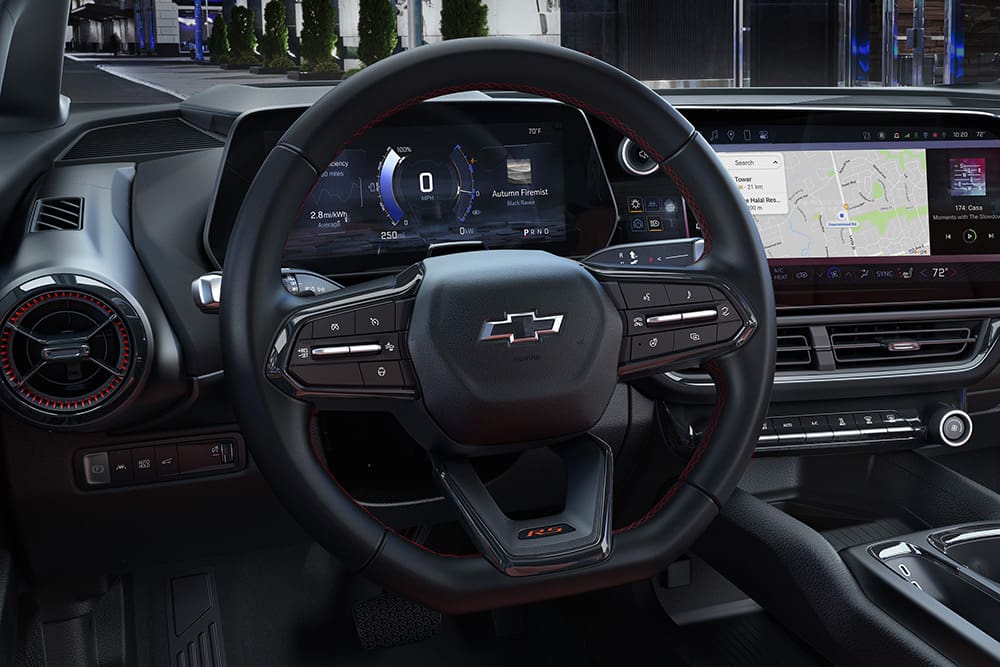
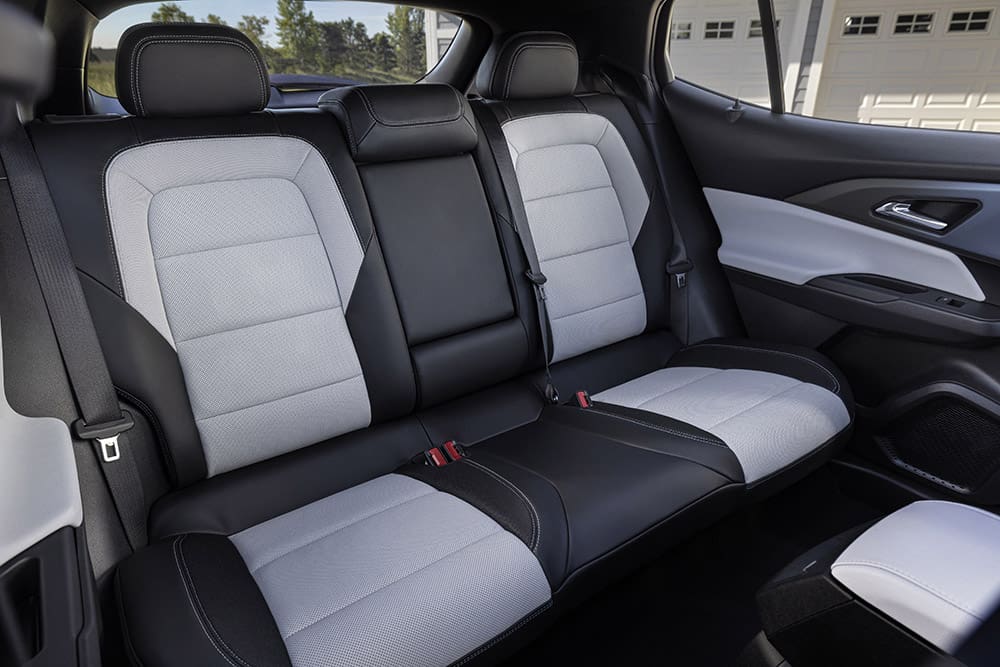
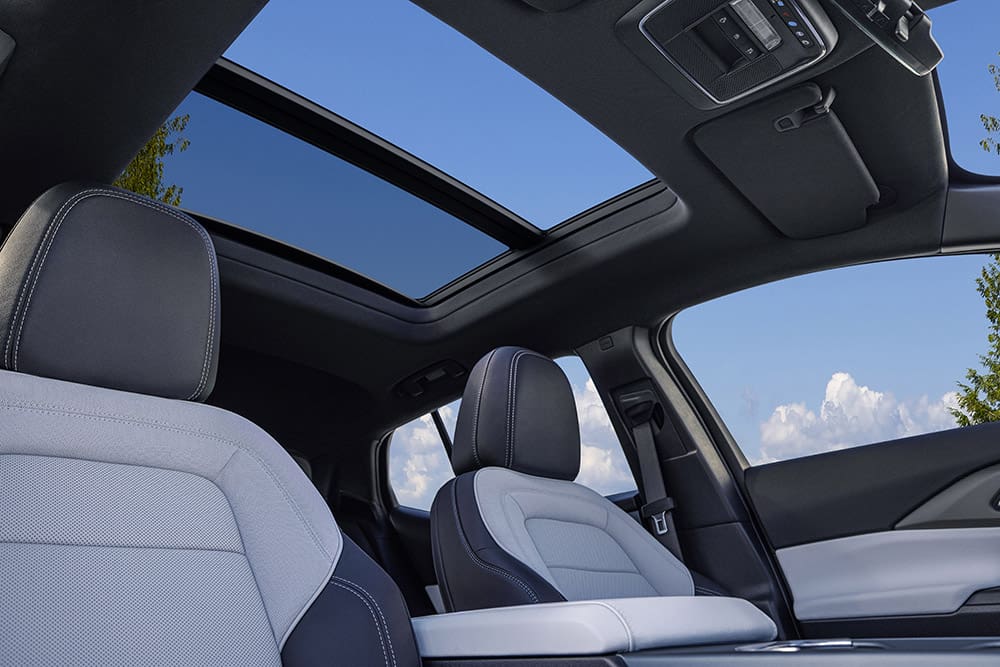

Photo By John Voelcker
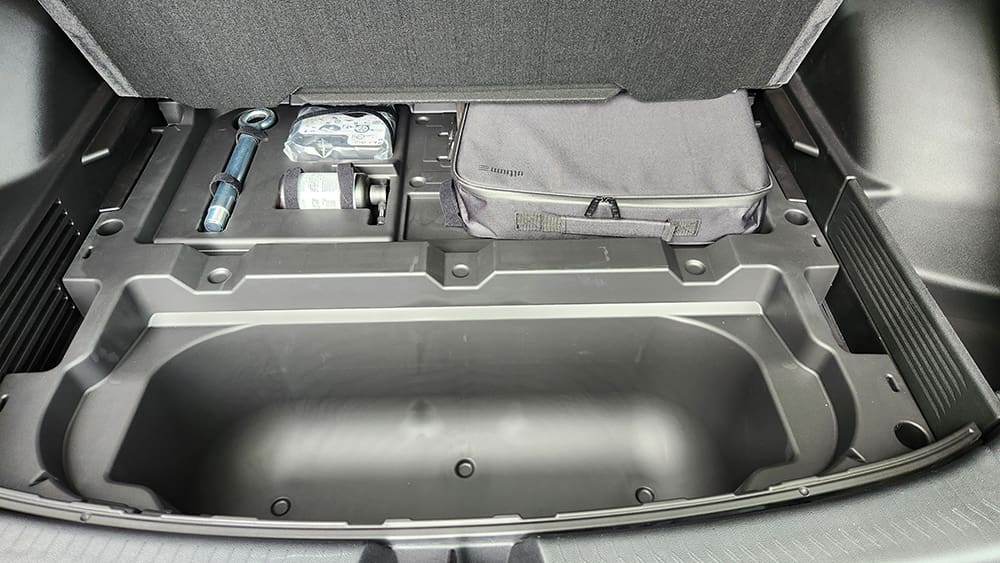
Spacious, predictable, not weird
Chevrolet calls the 2024 Equinox EV a “compact” crossover, but it has the dimensions of a mid-size SUV from 20 years ago. It’s also longer, wider and heavier than the gasoline Equinox. The phenomenon of automotive bracket creep is real, and pervasive, but the electric Equinox is on the very outer edge of what you might reasonably consider “compact.” That said, the extra size goes toward excellent interior volume—not every compact crossover lets 6-foot passengers sit behind one another. The flat floor ahead of rear-seat riders adds to the sense of spaciousness.
Behind the wheel, the Equinox EV lacks the explosive acceleration provided by some of its electric competitors. Acceleration is perfectly suitable (0-60 mph in 8.0 seconds for the FWD model, Chevy says, and 6.0 seconds for AWD), but the pedal feel is progressive, meaning the driver must specifically ask for power to get it—and full-bore acceleration requires flooring the pedal. Just like a gasoline car, perhaps?
Every Equinox EV carries an onboard AC charger rated at 11.5 kW. DC fast charging at up to 150 kW comes via a CCS port.
On the road, the handling and roadholding induces confidence without being particularly memorable. Our test drive took place in and around Detroit, a monotonously flat region laid out largely with straight and rectilinear roads—meaning we had zero chance to toss it through hilly curves to see how it does outside a typical suburban driving scenario.
We also didn’t get a chance to test the charging capability. Every Equinox EV carries an onboard AC charger rated at 11.5 kW, which translates to as much as 36 miles of range added for each hour of charging. DC fast charging at up to 150 kW comes via a CCS port. Chevrolet quotes “approximately 77 miles of range in 10 minutes,” though it notes that will vary based on the battery’s state of charge, the ambient temperature, the power capability of the charging station, and further factors. Chevy told reporters bidirectional charging for V2H electric backup will be provided through an over-the-air update at some point in the future.
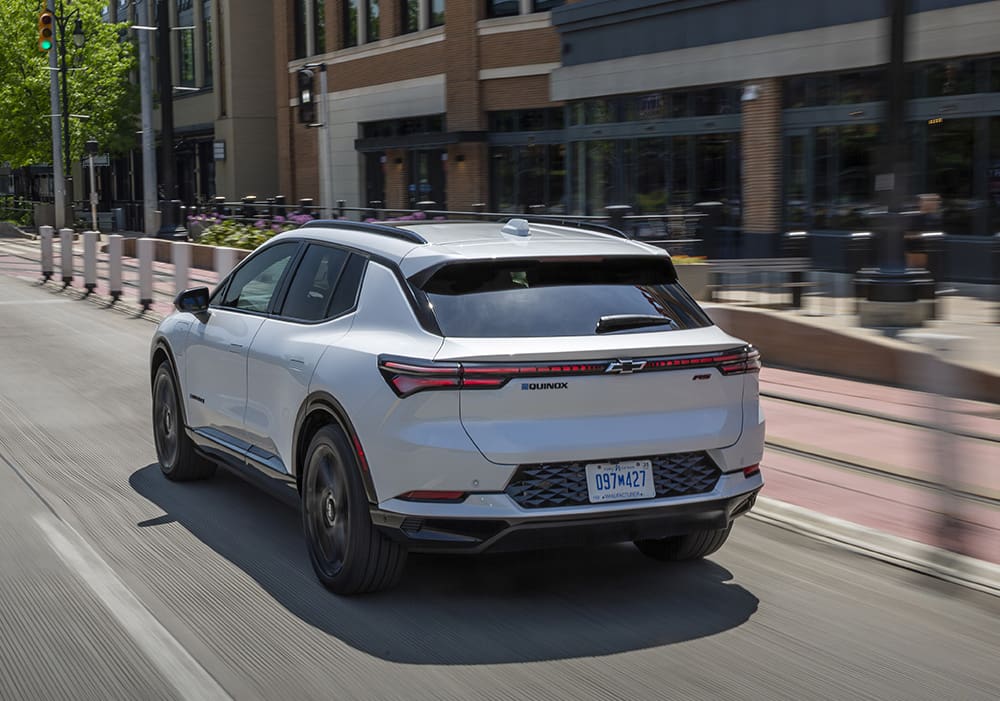
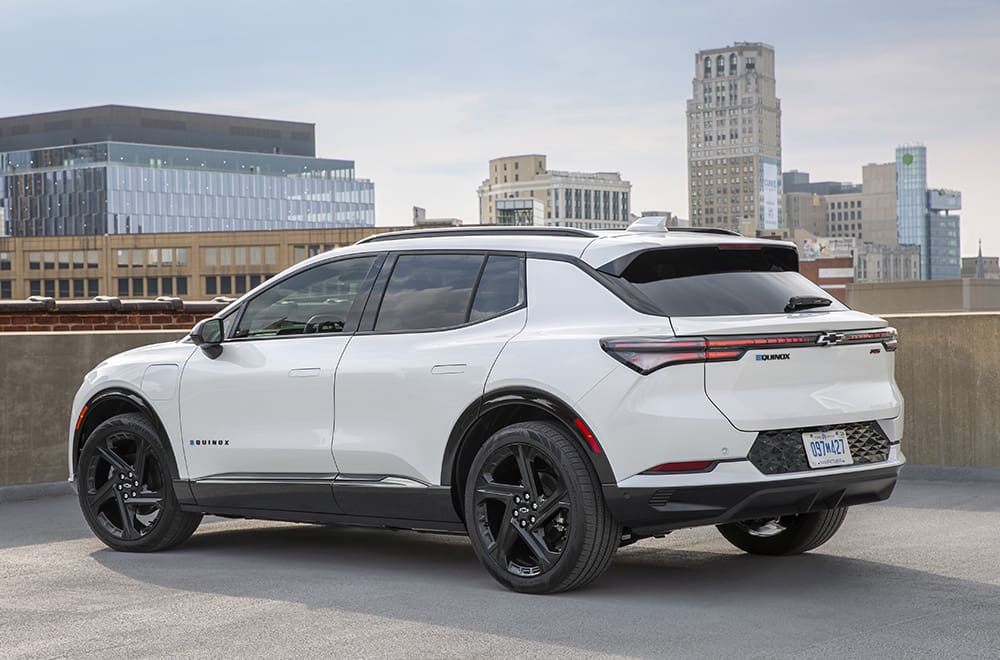
Photos Courtesy of Chevrolet
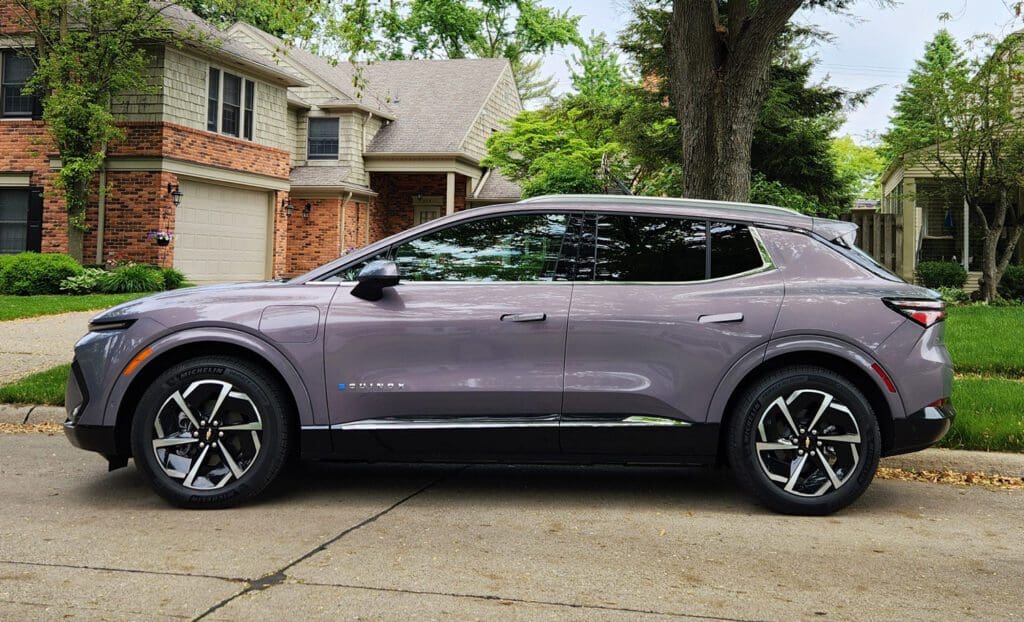
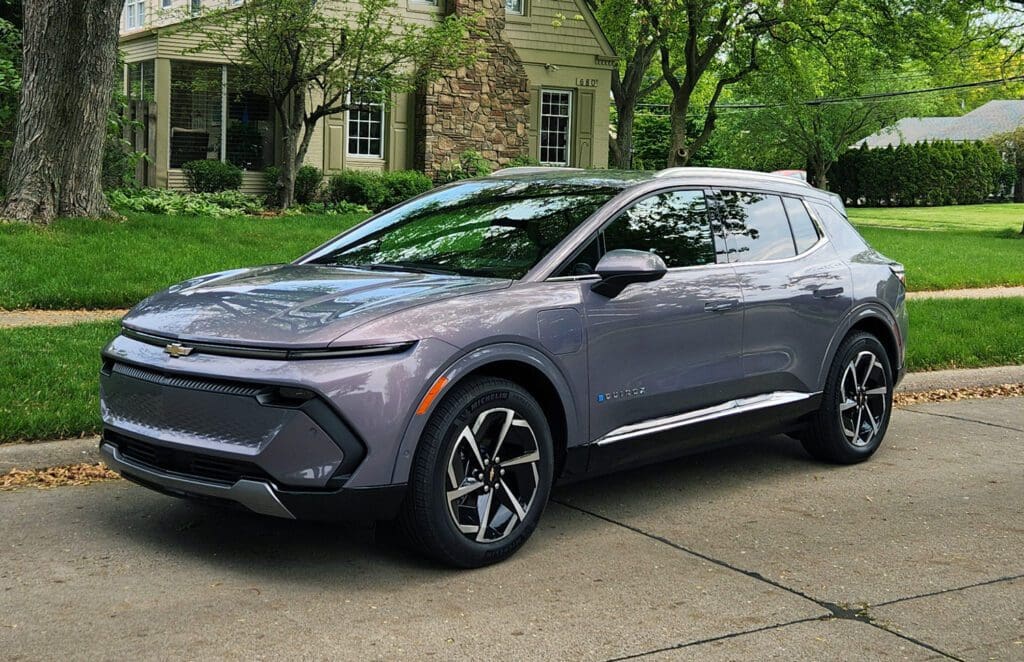
Photos By John Voelcker
The Ultium abyss
We would have had the Equinox EV earlier—and its big brother, the Blazer EV, much earlier—if GM hadn’t run into lengthy and embarrassing problems in getting the machinery that assembles the Ultium battery modules to run at anything approaching high-volume rates. That problem first arose in 2022, and took 12 to 18 months to address properly.
It caused GM to back away from promises of specific EV sales volumes it had made. In February 2022, the company said it expected to sell 400,000 EVs by the end of 2023. In October of that year, just eight months later, it rolled the date back to mid-2024—and then gave up altogether on the 400,000 number. Actual 2023 sales of Ultium EVs were just 13,838, mostly Cadillac Lyriqs.
Those problems now appear to be history, and Chevrolet is starting to ship Silverado EVs, Blazer EVs and Equinox EVs to its EV-certified dealerships. The company’s Q1 sales weren’t anything to write home about—only the Lyriq posted meaningful numbers—and Q2 will likely be better, but not a blowout. Watch the sales results for Q3 and Q4 to see whether GM delivers six figures’ worth of EVs in calendar 2024. Add that to a predicted 40,000 Honda Prologues and 20,000 Acura ZDXes—built on the same underpinnings, in the same plants as the Cadillac and Chevy utility vehicles—and we’ll see whether this is the year GM finally begins to sell EVs in volume after killing off the Bolt EV and EUV late last year.
As always, the big challenge is the dealers through whom any car shopper is required by law to buy any new vehicle. GM CEO Mary Barra routinely refers to the company’s network of independently owned and operated third-party franchised dealers as “valued partners,” but that status acknowledges the limits on what GM can and can’t get them to do.
A recent article in E&E News queried auto dealers who are Congressional representatives about EVs and their prospects. “The EV market is phony. It’s not real,” said Rep. Roger Williams (R-TN). He chairs the House Small Business Committee, and owns a Texas dealership selling Stellantis brands. His dealership refuses to sell EVs.
The biggest question is whether the company’s dealers will take the time to understand those new products in detail and be willing to explain them to wary but EV-curious customers.
Williams may not be typical, but the biggest question hanging over Chevrolet and GM isn’t whether it can build the EVs. It’s whether the company’s dealers will take the time to understand those new products in detail, be willing to explain them to wary but EV-curious customers, and sell them as aggressively as they do the combustion-engine Equinox. To date, most dealers haven’t done so—and far too many have misrepresented their EV products or outright lied about their capabilities, how charging is done, and the rest.
Even if much of it was supposed to happen last year, this many EV models from GM hitting the market during 2024 is bound to have an impact. Watch to see how dealers handle the deluge of new products. You could even take a stroll down to your nearby Chevrolet dealer and see for yourself.
Chevrolet provided airfare, lodging and meals to enable Charged to bring you this first-person drive report. Photo By John Voelcker
This article first appeared in Issue 68: April-June 2024 – Subscribe now.
from Charged EVs https://ift.tt/hpSaHle



No comments:
Post a Comment